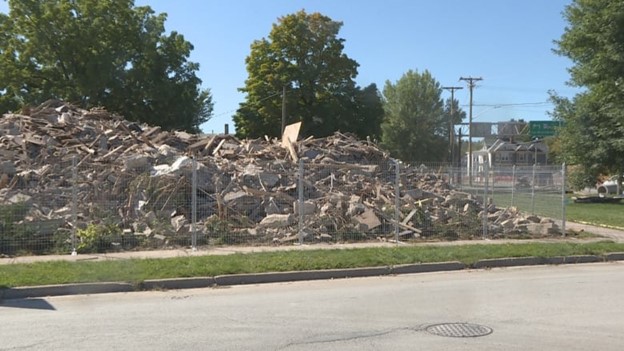Why Net Zero targets are important… but in their current form will accelerate climate change
October 27, 2023 | heritagestanding.com
Climate change is here. Hurricanes on the Atlantic coast, heat domes in British Columbia, and wildfires consuming entire towns give no room for questioning if or when. Municipalities are at the forefront, determinedly facing these challenges both through immediate mitigation measures and future energy use reduction.
But in their current form Canada’s expanding collection of municipal net-zero targets could make global CO2eq emissions worse.
Net zero targets are rapidly bubbling to the surface in many areas of society, and municipalities are no exception. Much of the focus of these net zero targets is placed on buildings. While in the past energy consumption targets were saved for new construction, applying these targets to existing buildings is becoming more frequent. This is appropriate and should be applauded. For example The City of Toronto released its “Net Zero Existing Buildings Strategy” in 2021, with the goal of “achieving dramatic city-wide greenhouse gas emissions reductions of 80% by 2050…”
But… the use of the term “city wide” in their goal will inherently ruin their chances for slowing climate change.
Most emissions reduction strategies for existing buildings begin similarly, with a goal that is not relevant to slowing the global phenomenon of climate change. They have drawn a circle around their land borders, and decided that the only thing that matters is CO2eq emitted within the circle. No matter if:
- the new super-efficient windows emit twice as much CO2eq during production, as they save in operational CO2eq emissions “within the circle” during their lifespan.

- a sound hundred year old building is replaced with a new building with a forty year lifespan, and the CO2eq emissions of the materials used the new building’s production will never be offset by its much touted and hard earned (ie complex and material intensive) operational efficiency
- producing construction materials “within the circle” will increase the municipality’s emissions and be avoided, even though doing so will save large amounts of transportation emissions.
As seen in the examples above, at their core most current emissions policies focus on the emissions due to operating a building (for example heating and electricity use), rather than the emissions associated with the production and transportations of the materials used to make the building. These policies promote more consumption. And any policy or regulation that depends on increased consumption to slow climate change will fail. We have ignored reduce, reuse, recycle. The images above, taken by Gary Moore of CBC, show before and after photos of a 1820's stone building that was being used as commercial space before its demolition. Presumably the building that will replace it will not last 200 years.
Do we really care about our planet’s future, or do we want to check a box and pretend we are helping?
In another blog post we will delve into embodied carbon and construction, and the interplay between the lifespan of buildings and materials, their embodied carbon, and operational energy use.
We know there are groups that have devoted time and energy to doing the right thing even though it is difficult. Is your municipality (like the City of Vancouver) or institution doing amazing things with carbon emissions targets? Have they expanded their circle, and account for both the energy use in operation and the energy used in production and transportation of materials? If so we’d love to hear from you: get in touch and we can highlight the excellent work being done.
In hopeful action,
Sonya






